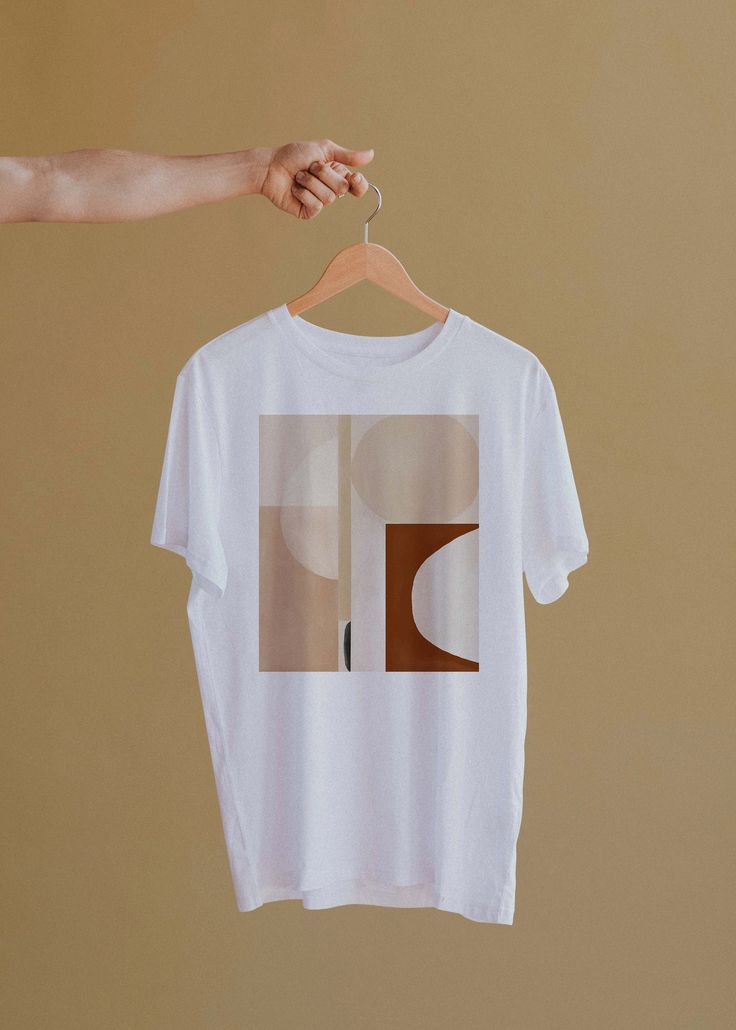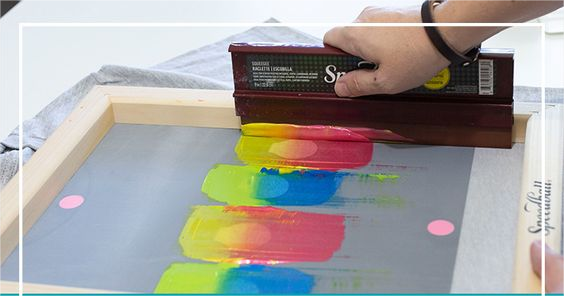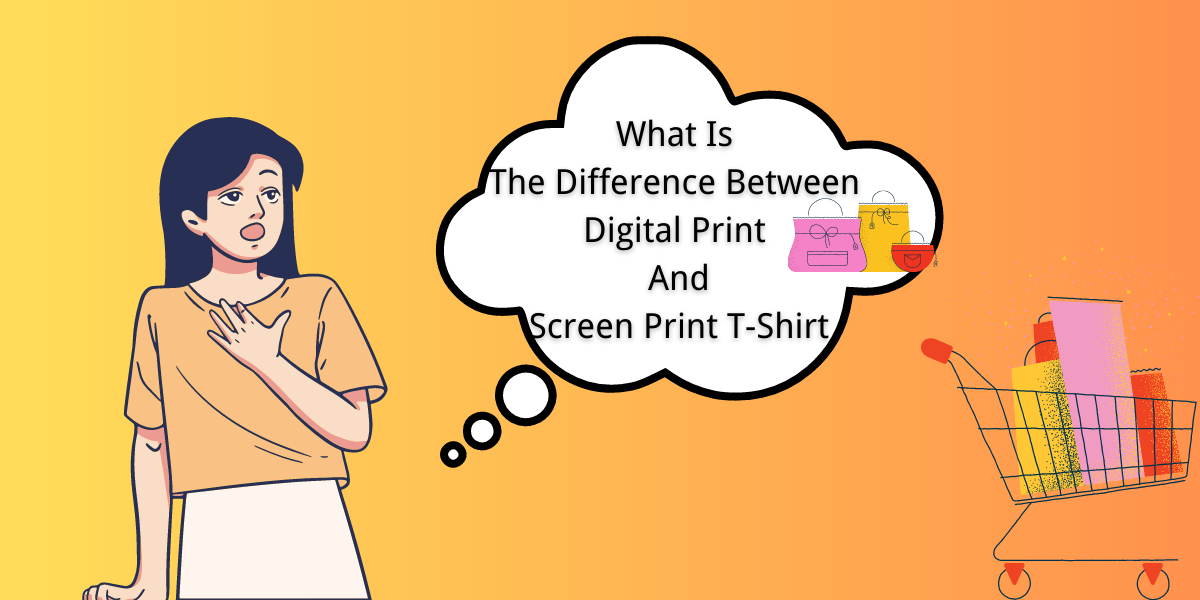Digital printing and screen printing are two popular methods for printing designs on t-shirts. When it comes to wholesale printed t-shirts, many people want to know the difference between screen printing and digital printing on t-shirts. The most significant difference is that screen printing completes one colour at a time, while digital printers typically meet the full 4-color printing at once. This article details the difference between digital print and screen print t-shirts so that you can choose your desired printing method. Visit TOB Clothing Wholesale, a high-quality t-shirt supplier, where you can find a variety of t-shirt printing styles that will surprise you.
What Is Digital Printing?
Digital printing is a modern printing method that enables the direct printing of digital images onto various substrates such as paper, fabric, plastic, and more. This printing method has revolutionized the printing industry by providing flexibility and customization options that traditional printing methods cannot match. Unlike traditional printing methods that require plate making and other mechanical setup processes, digital printing uses inkjet or laser printers to print high-quality images with great precision and detail, making it more cost-effective and less time-consuming.
Digital printing technology has evolved significantly over the years, making it possible for printers to handle a wide variety of substrates. For example, digital printers can print on textiles, allowing for the production of custom apparel such as T-shirts, hats, and hoodies. The ability to print on textiles is a significant advantage of digital printing, as it allows for the creation of unique and customized garments that were previously not possible with traditional printing methods.
In addition, digital printing can print in multiple colors, producing high-quality prints with vivid colors and complex designs that are difficult to replicate with other printing methods. This is due to the high resolution capability of digital printers, which can print images with precise details and color accuracy.

This content is sourced from Wikipedia:View more
What Is Screen Printing?
Screen printing is a popular and widely used printing method that involves transferring ink or dye onto a substrate through a mesh stencil or screen. The process starts with creating a template of the design or image to be printed on a transparent film, paper, or fabric. The template is then attached to a screen made of polyester or other synthetic materials that have been coated with a light-sensitive emulsion. The screen is then exposed to a light source, which hardens the emulsion in the areas that are not covered by the template. After exposure, the screen is washed with water, and the unhardened emulsion is removed, leaving a stencil of the design or image on the screen.
Next, ink or dye is applied onto the screen and spread over the stencil using a squeegee. The ink is then forced through the open areas of the stencil and onto the substrate, which could be a wide variety of materials, including paper, fabric, plastic, or metal. The substrate is placed underneath the screen, and the ink is pressed onto it with the squeegee.
Screen printing is known for its ability to produce high-quality screen-printed t-shirts, and durable prints with bright and vibrant colors. It is commonly used in the printing industry for a variety of applications, including printing logos, graphics, and text on T-shirts, tote bags, posters, and other promotional items. Additionally, screen printing is often used in the production of fine art prints, as it allows artists to create detailed and intricate designs with a range of colors and effects. This information can help you choose the perfect screen printing wholesaler.

This content is sourced from Wikipedia: View more
The Difference Between Digital Print And Screen Print T-Shirt
- Process
Digital printing is a direct-to-garment printing method that uses a specialized inkjet printer to print a digital image directly onto fabric. This method offers greater flexibility and customization options than traditional printing methods. In contrast, screen printing involves using a stencil or screen to transfer ink to a T-shirt or other fabric.
- Colour
In terms of color, digital printing has a wider range of colors than screen printing. Digital printers can mix different ink colors to create almost any shade or tone, and the number of ink colors available for a single design limits screen printing. However, screen printing often produces a more vibrant finish, especially for colors such as reds, oranges, grays, and greens. Colors in screen printing are often more vibrant due to the thickness of the ink used.
- Details
In terms of details, digital printing is more suitable for designs with complex details, such as printing graphics on T-shirt sleeves. Inkjet printers used for digital printing can produce high-resolution images, allowing gradients and fine details to be printed, including photographs. On the other hand, screen printing is more suitable for simple designs with thick lines and large areas of color. In screen printing, fine details or complex designs may be difficult to achieve using templates or screens.

- Cost
When it comes to smaller orders, digital printing can be more expensive than screen printing due to the setup costs associated with the latter. Screen printing requires the creation of separate templates or screens for each color in the design. These screens must be set up before printing, taken down after printing, and directed with templates and other tools, which can increase setup costs. However, for larger orders, screen printing can be more cost-effective since the initial setup cost can be amortized over a larger number of prints.
- Durability
Screen printing is generally considered more durable than digital printing, especially for designs that will be frequently washed and worn. This is because screen printing ink is thicker, more opaque, and can withstand repeated washing without fading or cracking. In contrast, digital printing uses a thin layer of ink that sits on top of the fabric and may fade or crack over time with frequent washing. Screen printing is therefore a better option for designs that need to withstand the rigors of everyday use.

Conclusion
In summary, digital printing is more suitable for small orders, complex designs, and a wide range of colours, while screen printing is more suitable for large orders, simple designs, and durable t-shirt printing that can withstand frequent washing. TOB wholesale is an ideal supplier that produces high-quality products at ideal prices. You can check their website or social media platforms for customer reviews.
FAQs
What is better, screen printing or digital printing?
Screen printing involves creating a stencil or “screen” for each color in the design and then applying the ink to the fabric through the open areas of the stencil. Digital printing uses a computer to transfer the design directly to the fabric via inkjet or other digital printing technology.
In general, screen printing is best suited for high-volume production of simple designs with fewer colors, while digital printing is better suited for smaller production runs with more complex designs and greater color variations.
What does digital print mean on a t-shirt?
Digital printing on t-shirts is a popular alternative to traditional screen printing, as it allows for a high level of detail and color accuracy, and is particularly suited for printing small batches or one-off designs.
Digital print on a t-shirt refers to the process of printing an image or design directly onto the fabric using a digital printer. This technique uses inkjet or laser printers that apply the design onto the fabric using a series of tiny droplets of ink or toner.
Does digital printing last longer than screen printing?
The durability of digital printing on a t-shirt can vary depending on several factors, such as the quality of the ink, the type of fabric, and the care taken when washing the garment.
In general, digital printing can be less durable than screen printing, especially when using low-quality ink or printing on fabrics that are prone to fading or shrinking. However, with high-quality inks and proper care, digital prints can last a long time without fading or cracking.


